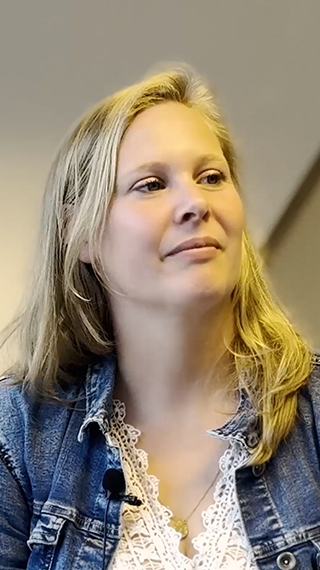Our client operates with a large IT department, split into several specialized teams: maintenance, security, DevOps, and more. Each team planned its annual work independently, based solely on its own budget. Cross-functional projects and dependencies were often overlooked, and there was no shared understanding of how time was distributed between maintenance and projects.
This siloed approach created ripple effects. Minor issues within one team escalated quickly, causing delays across multiple projects. These delays often went unnoticed until it was too late. As a result, delivery timelines slipped, and the Portfolio Manager found themselves managing without visibility—unable to answer fundamental questions:
- Who is available to do the work?
- When can they do it?
- What needs to be done?
- How should priorities be defined?
The Challenge
The need for a robust Resource Capacity Planning solution was well-known internally. But confidence was low—three previous implementation attempts had failed. Lengthy alignment meetings led nowhere. Stakeholders described them as exhausting and ineffective. Over time, Project Managers stopped engaging, seeing no tangible impact from the process.
This loss of trust made it nearly impossible for Portfolio and Project Managers to operate effectively. When we joined the initiative, skepticism was high. But that was expected. Many had tried—and failed—before.
Our Approach
With support from the Portfolio team and trust from leadership, we knew success would depend on making the solution operational—not theoretical. Our mission was clear: rebuild trust, foster collaboration, and enable informed decision-making between Business and IT.
Discovery Phase
Our first step was to engage the right people. We prioritized identifying ambassadors—key individuals across the IT department who could champion the initiative and bridge communication gaps between teams. Their involvement was critical in creating early momentum and credibility.
With ambassadors on board, we moved into diagnosis. Together, we clarified the mission, objectives, and scope. We aligned on which teams would be involved and at what level of granularity—by team, by skillset, or down to the individual.
Then came the deep dive. We reviewed:
- Annual budgets
- Historical workload data
- The current initiative portfolio
Through interviews and data analysis, we matched demand with actual team capacity. The findings were clear: maintenance work consumed a disproportionate share of resources. Teams were already overbooked before the year began. No margin was left for urgent requests, holidays, or unexpected leave.
To bring these insights to life, we built a high-level prototype. This tool helped visualize workloads and inter-team dependencies. It quickly revealed structural issues like undefined project scopes, lack of ownership, and recurring bottlenecks in support teams. Beyond its diagnostic value, the prototype proved instrumental in showing stakeholders the benefits of a more structured capacity planning process.
The discovery phase was about more than gathering data. It was about rebuilding alignment and exposing hidden issues in a transparent, collaborative way.
Definition and Delivery Phase
We kicked off with the Decide phase. Rather than mandate a top-down solution, we co-created the new process with ambassadors and stakeholders. The shared goal: build a transparent, data-driven, and operational process.
In the Design phase, we held a series of workshops to shape the solution. Together, we:
- Identified gaps in the existing ecosystem
- Reimagined data flows and responsibilities
- Defined how the process would support both strategic and day-to-day needs
A key choice emerged. While the initial request involved integrating Microsoft Project Online, we deprioritized this to focus on adoption. Instead, we refined the prototype to become a practical, usable tool. Manual lead-time reporting was replaced with automated data collection, using accessible team-level data. This change standardized inputs for our Capacity Planner.
The resulting prototype (v2.0) could:
- Automatically calculate team workloads
- Align resource needs to project timelines
- Provide a dynamic and reliable planning baseline
In the Develop phase, we turned this design into a working solution. We ensured usability, documented processes, and conducted hands-on training. Automation reduced manual inputs and increased data reliability, helping transform scattered information into structured insights.
The Deliver phase focused on sustainable rollout. We opted for gradual integration. This gave teams space to adjust, share feedback, and truly embed the new process into their ways of working. Rather than force change, we built trust in it.
Sustainment and Closure
We wrapped up with a structured evaluation. Together with IT and Portfolio Managers, we defined performance metrics and assessed the solution’s effectiveness.
We also celebrated progress. After multiple failed attempts, this success mattered. Highlights included:
- A clear view of a 3.4 FTE shortage during the summer holidays
- Evidence-based budget requests
- Visibility into support team overloads and priority clashes
Recognizing and communicating these wins helped reinforce new behaviors and turn momentum into culture.
Results
Today, Portfolio and IT Managers can:
- See cross-functional needs at a glance
- Detect bottlenecks early
- Understand how work is distributed between maintenance and projects
More importantly, the IT department is now empowered to engage business counterparts with confidence—whether to justify resource needs or reprioritize initiatives.
In short, trust is back.
What’s Next
The immediate next step is to determine how Project Managers will contribute to the process. Should they be responsible for reviewing and updating pre-calculated data once assigned to a project? This would mark a shift in their role and require targeted training.
Long-term, the goal is to institutionalize the approach by:
- Updating existing project management processes
- Implementing a comprehensive methodology
- Formalizing a Target Operating Model for scalable, repeatable planning
We can help you too
We combine deep operational experience with a collaborative approach to help organizations transform the way they manage teams, plan resources, and drive delivery. Whether you are starting from scratch or trying to recover from past attempts, we can help you get it right—and make it last.
Discover our Efficiency Improvement Solution here.
